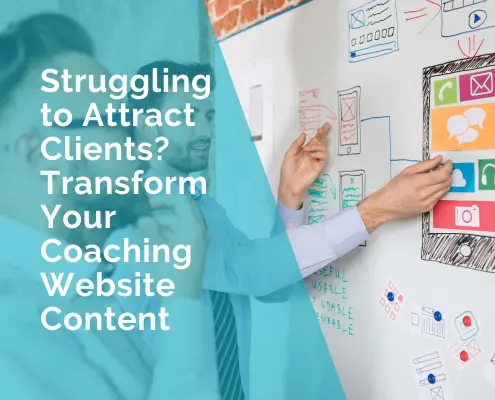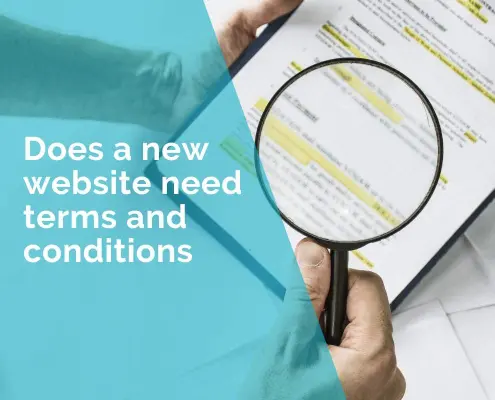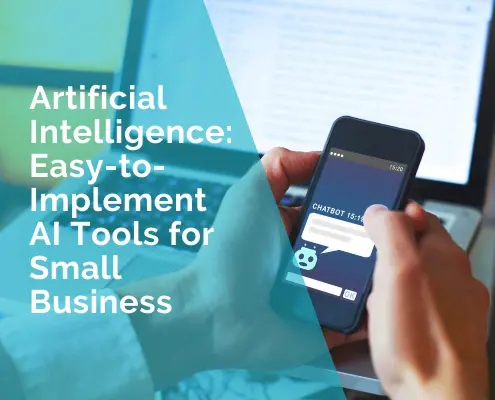AI Content Creation: How Artificial Intelligence Can Help Small Businesses Create Irresistible Copy
The Power of Irresistible Copy for Small Businesses
When it comes to attracting customers and growing a small business, the power of irresistible copy is truly remarkable. In this article, we’ll explore how using persuasive and captivating words can make a big difference in capturing people’s attention, sparking their interest, and ultimately boosting sales.
Grabbing Attention
Imagine walking past a store with a sign that says, “Limited-Time Offer: Get 50% Off Today!” That’s irresistible copy at work! It’s like a bright neon sign that catches your eye and makes you stop to see what’s inside. Small businesses use words and phrases that instantly grab attention, making people curious to know more.
Let’s say you own a small clothing boutique. Using irresistible copy, you could have a sign that says, “Dress to Impress: Discover Your Perfect Style!” This will make people stop and think, “Wow, I wonder what kind of stylish clothes they have!”
Building Trust and Connection
Irresistible copy is about building trust and establishing a connection with potential customers. It’s like a friendly conversation that makes people feel comfortable and confident in choosing your business. Small businesses use words that show they understand their customers’ needs and can provide the solutions they’re looking for.
Suppose you have a small landscaping company. With irresistible copy, you can say, “Transform Your Outdoor Oasis: Let Our Experts Create Your Dream Garden!” This will make people feel like you truly understand their desire for a beautiful and relaxing outdoor space.
Telling a Compelling Story
Everyone loves a good story, and small businesses can use irresistible copy to tell stories that captivate their audience. It’s like sharing an engaging narrative that connects with people on an emotional level and makes them want to be a part of your brand.
Consider a small coffee shop. With irresistible copy, you can describe your signature blend as, “A Journey to Flavor: Taste the Richness of Our Handpicked Coffee Beans!” This story-like approach makes customers feel they’re embarking on a delicious adventure with each cup.
Encouraging Action
Irresistible copy is persuasive, encouraging potential customers to take action. It’s like a friendly nudge that motivates people to make a purchase or engage with your business. Small businesses use words that create a sense of urgency or highlight the benefits of acting now.
Let’s say you offer graphic design services. With irresistible copy, you could say, “Stand Out from the Crowd: Get a Professional Logo Today and Boost Your Business!” This encourages business owners to take action immediately to enhance their brand image.
The concept of AI in content creation
AI, which stands for Artificial Intelligence, has revolutionized many aspects of our lives, including content creation. AI in content creation refers to the use of advanced algorithms and machine learning techniques to automate and enhance various stages of the content creation process.
It involves utilizing AI-powered tools and technologies to generate, edit, optimize, and personalize content across different mediums such as written articles, videos, and social media posts.
AI can assist in tasks like generating ideas, improving grammar and style, creating engaging headlines, analyzing data for content optimization, and even personalizing content for specific target audiences.
With AI tools such as an online rephraser, businesses and individuals can streamline their content creation efforts, save time, and produce high-quality content that resonates with their audience.
The Importance of Compelling Copy for Small Businesses
In the competitive world of business, having a compelling copy is like having a powerful magnet that attracts customers to your small business. In this article, we’ll explore why having persuasive and engaging words is crucial for small business owners, and how it can help them stand out, connect with customers, and ultimately drive growth.
Making a Lasting Impression
Just like a friendly smile or a warm handshake, compelling copy helps create a positive and memorable first impression. It’s like a welcoming sign that invites customers to explore further. Small businesses can use words that convey their unique value and make a strong impact on potential customers.
Imagine you have a small bakery. A compelling copy can be as simple as saying, “Indulge in Heavenly Treats: Taste the Freshness and Delight in Every Bite!” This instantly leaves a sweet impression on customers and makes them eager to visit your bakery.
Building Trust and Credibility
Compelling copy plays a crucial role in building trust and credibility with your audience. It’s like a trustworthy friend who always delivers on promises. Small businesses can use words that showcase their expertise, reliability, and dedication to customer satisfaction.
Suppose you offer accounting services for small businesses. Compelling copy can state, “Financial Peace of Mind: Trust Our Expert Accountants to Handle Your Finances with Precision and Care.” This reassures potential clients that their financial matters are in capable hands.
Engaging Emotions
Compelling copy has the power to stir emotions and forge connections with customers. It’s like a heartfelt conversation that resonates with people on a deeper level. Small businesses can use words that evoke emotions, such as joy, excitement, or even a sense of belonging.
Consider a small fitness studio. Compelling copy can say, “Discover the Power Within: Join Our Supportive Community and Embrace a Healthy Lifestyle!” This appeals to potential clients’ desire for personal growth, support, and a sense of belonging to a fitness-minded community.
Persuading and Driving Action
Compelling copy is persuasive and encourages customers to take action. It’s like a gentle push that motivates people to make a purchase, sign up for a service, or engage with your business. Small businesses can use words that highlight the benefits, create a sense of urgency, or offer irresistible deals.
Let’s say you have a small online store selling handmade jewellery. Compelling copy can say, “Elevate Your Style: Limited Stock Available – Shop Now and Enjoy 20% Off!” This entices customers to make a purchase by highlighting exclusivity and a special discount.
The Impact of Well-Crafted Copy on Attracting and Engaging Customers
In the world of business, the right words have the power to captivate, persuade, and win over customers. Well-crafted copy refers to carefully chosen words and phrases that are designed to grab attention, convey a compelling message, and create a connection with your target audience. In this article, we will explore the impact of well-crafted copy on attracting and engaging customers and how it can drive business success.
Capturing Attention
Just like a dazzling shop window or an intriguing headline, well-crafted copy grabs the attention of potential customers. It’s like a spotlight that shines on your business and makes it stand out from the competition. By using attention-grabbing words and creative messaging, you can pique the curiosity of your audience and entice them to explore further.
Imagine you own a coffee shop. Instead of a plain sign that says “Coffee Shop,” well-crafted copy could say, “Awaken Your Senses: Indulge in the Rich Aromas and Flavors of Our Handcrafted Coffees.” This catchy and descriptive copy immediately captures the attention of passersby and entices them to step inside.
Conveying Value
Well-crafted copy goes beyond mere words; it conveys the value and benefits your business offers. It’s like a persuasive friend who highlights the unique qualities of your products or services. By focusing on the solutions your business provides and the positive impact on customers’ lives, you can build trust and establish your brand as a go-to choice.
Let’s say you offer cleaning services. Instead of a generic description like “We Clean Houses,” well-crafted copy could say, “Relax and Reclaim Your Time: Let Our Expert Cleaners Transform Your Home into a Spotless Haven.” This copy conveys the value of a clean home and how it can alleviate stress, allowing customers to focus on what truly matters to them.
Creating Emotional Connection
Well-crafted copy has the ability to tap into customers’ emotions and forge a connection. It’s like a heartfelt conversation that resonates on a personal level. By using words that evoke emotions such as joy, nostalgia, or even a sense of belonging, you can create a bond with your audience and make your business more relatable.
Suppose you run a pet store. Instead of a plain tagline like “We Sell Pet Supplies,” well-crafted copy could say, “Unleash Happiness: Spoil Your Furry Friends with Toys, Treats, and Love.” This copy not only emphasizes the joy pets bring but also positions your store as a place where pet owners can find everything they need to shower their companions with love and care.
Encouraging Action
Well-crafted copy is persuasive and prompts customers to take action. It’s like a gentle nudge that motivates people to make a purchase, contact you, or engage with your business. By using compelling calls-to-action and creating a sense of urgency or exclusivity, you can drive customer engagement and boost conversions.
Consider an online clothing store. Instead of a plain product description, well-crafted copy could say, “Upgrade Your Wardrobe: Limited Stock Available – Shop Now for Exclusive Fashion Finds.” This copy combines the allure of exclusivity with a sense of urgency, encouraging customers to take immediate action and make a purchase.
Challenges Faced by Small Businesses in Content Creation
Content creation can present various challenges for small businesses. Here are some of the common obstacles they face, explained in simple terms:
Limited Resources
Small businesses often have limited budgets, time, and personnel dedicated to content creation. It’s like trying to bake a cake without all the necessary ingredients and tools. This can make it difficult to produce high-quality and consistent content.
Lack of Expertise
Small business owners may not have the expertise or experience in content creation. It’s like trying to fix a car engine without any mechanical knowledge. This can result in content that lacks professionalism or fails to resonate with the target audience.
Time Constraints
Small business owners wear multiple hats and have numerous responsibilities. Content creation can be time-consuming, requiring research, writing, editing, and promotion. It’s like juggling multiple tasks without dropping any. This can lead to rushed or inconsistent content.
Content Strategy
Without a clear content strategy, businesses may struggle to create content that aligns with their goals and resonates with their audience. It’s like navigating a ship without a map or compass. This can result in unfocused and ineffective content.
Generating Ideas
Coming up with fresh and engaging content ideas can be challenging. It’s like trying to paint a blank canvas without any inspiration. This can lead to repetitive or uninspiring content that fails to captivate the audience.
Maintaining Consistency
Consistency is crucial in content creation. It’s like telling a story with missing chapters or changing characters. Inconsistency can confuse the audience and dilute the brand’s message.
Keeping Up with Trends
The digital landscape is constantly evolving, and it can be challenging for small businesses to stay updated with the latest content trends and techniques. It’s like trying to keep up with a fast-moving train. Falling behind can make the content feel outdated and less engaging.
Budget Constraints
Allocating a sufficient budget for content creation, including tools, software, and outsourcing, can be a challenge for small businesses. It’s like trying to build a house without enough funds. Limited resources can restrict access to advanced content creation tools and services.
Measuring Effectiveness
Determining the success of content creation efforts can be difficult without proper measurement and analysis. It’s like playing a game without keeping score. Without tracking key metrics, businesses may struggle to identify what’s working and what needs improvement.
Adapting to Platforms
Each digital platform has its own unique requirements and best practices for content creation. It’s like speaking different languages in different countries. Small businesses may find it challenging to adapt their content for various platforms, resulting in inconsistent messaging or ineffective reach.
Role of AI in Automating and Enhancing the Content Creation Process
AI plays a significant role in automating and enhancing the content creation process for businesses. Here’s a simple explanation using examples and analogies:
Automating Repetitive Tasks
AI can automate repetitive tasks involved in content creation, such as generating outlines, proofreading, or formatting. It’s like having a virtual assistant that takes care of mundane tasks, allowing business owners to focus on more creative and strategic aspects of content creation.
Content Generation
AI algorithms can generate content for various purposes, such as emails, blog articles, or social media posts. It’s like having a smart writing tool that suggests ideas and helps craft engaging content. For example, AI can generate personalized email content by analyzing customer data and preferences.
Language Assistance
AI-powered tools can provide language assistance, suggesting improvements to grammar, sentence structure, and style. It’s like having a digital writing coach that helps refine and polish content. This ensures that the final output is clear, professional, and error-free.
Data-driven Insights
AI can analyze data and provide valuable insights to optimize content performance. It’s like having a marketing analyst that crunches numbers and identifies trends. For instance, AI can analyze user engagement metrics to determine which blog topics or social media posts resonate most with the target audience.
Personalization and Audience Segmentation
AI can help tailor content to specific target audiences by analyzing customer preferences and behaviour. It’s like having a personal shopper that selects the right clothes for each individual. AI can analyze customer data to personalize website copy, email campaigns, or product recommendations.
Visual Content Creation
AI can assist in creating visual content, such as images or videos. It’s like having a digital artist that can generate visuals based on specific requirements. For example, AI can automatically generate video thumbnails or create visual elements for social media posts.
Content Curation and Recommendation
AI algorithms can curate and recommend relevant content to users based on their interests and behaviour. It’s like having a knowledgeable librarian who suggests the best books to read. AI-powered content recommendation systems can enhance user experience by providing personalized content suggestions.
Translation and Localization
AI-powered translation tools can help businesses translate content into multiple languages quickly and accurately. It’s like having a universal translator that breaks down language barriers. AI can ensure that businesses can reach and engage with a global audience effectively.
Content Planning and Strategy
AI can analyze market trends, competitor data, and user preferences to assist in content planning and strategy. It’s like having a strategic advisor that provides insights and recommendations for content creation. AI can identify content gaps, suggest relevant topics, and optimize content distribution channels.
Continuous Learning and Improvement
AI systems can learn from user feedback and improve over time. It’s like having a learning companion that grows with experience. AI algorithms can adapt to changing trends and preferences, refining content generation and personalization capabilities.
By leveraging AI in content creation, businesses can streamline processes, save time and resources, improve content quality, and deliver more personalized and engaging experiences to their target audience. It’s like having a powerful assistant that assists in every step of the content creation journey, making it more efficient and effective.
AI-Powered Tools and Technologies Available for Small Businesses
AI-powered tools and technologies have become increasingly accessible for small businesses, empowering them to create high-quality content more efficiently. Here’s a simple explanation of some AI-powered tools with examples and analogies:
Content Generation Tools
These tools use AI algorithms to generate content for various purposes. It’s like having a virtual content writer that assists in creating blog posts, social media content, or product descriptions. For example, tools like OpenAI’s GPT-4 can generate coherent and contextually relevant text using your tone of voice based on given prompts .
Grammar and Writing Assistance
AI-powered tools can help improve grammar, spelling, and writing style. It’s like having an intelligent editor that suggests improvements to make your content polished and error-free. Examples include Grammarly and ProWritingAid, which provide real-time suggestions to enhance the clarity and readability of your writing.
Visual Content Creation
AI tools can generate visuals like images, infographics, or videos. It’s like having a virtual designer that creates eye-catching visuals without the need for extensive design skills. Tools such as Canva and Adobe Spark offer intuitive interfaces and pre-designed templates to assist in creating professional-looking visual content.

Social Media Management
AI-powered social media management tools can automate tasks like scheduling posts, analyzing engagement metrics, and suggesting content ideas. It’s like having a social media manager that handles the day-to-day operations of your social media presence. Examples include Hootsuite and Buffer, which streamline social media management and provide insights to optimize content performance.
Personalization and Recommendation Engines
AI-powered recommendation engines can analyze user behavior and preferences to deliver personalized content recommendations. It’s like having a personal shopper that suggests products or content tailored to each individual. An example would be Amazon’s recommendation system, which suggests products based on previous purchases and browsing history.
Translation and Localization Tools
AI-powered translation tools can automatically translate content into multiple languages accurately. It’s like having a language interpreter that breaks down language barriers. Tools like Google Translate and DeepL use AI algorithms to provide quick and reliable translations, enabling businesses to reach a global audience.
Data Analytics and Insights
AI-powered analytics tools can analyze data to provide actionable insights about content performance, user behaviour, and market trends. It’s like having a business analyst that uncovers valuable information hidden within data. Tools like Google Analytics and Kissmetrics offer user-friendly dashboards and reports to help businesses make data-driven decisions.
Voice Assistants
AI-powered voice assistants like Amazon’s Alexa or Google Assistant can generate spoken content and answer customer queries. It’s like having a virtual assistant that interacts with customers through voice commands. Businesses can use voice assistants to create voice-enabled content, such as podcasts or voice-guided tutorials.

Chatbots
AI-powered tools like an AI voice chatbot can engage with customers, answer frequently asked questions, and provide support. It’s like having a customer service representative available 24/7. AI-powered tools like CallFluent AI allow businesses to automate customer interactions and provide instant assistance.

Content Planning and Strategy
AI-powered tools can analyze market trends, competitor data, and user feedback to assist in content planning and strategy. It’s like having a strategic advisor that provides insights and recommendations. Tools like BuzzSumo and SEMrush help businesses identify trending topics, analyze competitors’ content strategies, and optimize content for better performance.
AI Content Creation Tools
Feature |
Description |
Tools |
| Improved Writing Assistance: AI-driven grammar and style suggestions | AI-powered tools that provide suggestions for improving grammar, spelling, style, and clarity of writing. | Grammarly, ProWritingAid, Hemingway Editor |
| Content Generation: AI algorithms for generating creative and targeted copy | AI algorithms that generate content for various purposes, such as blog articles, social media posts, or product descriptions. | OpenAI’s GPT-3, Articoolo, Copy.ai, Jasper |
| Personalization: Using AI to tailor content to specific audiences | AI-based tools that analyze user preferences, behavior, and data to deliver personalized content recommendations and experiences. | OneSpot, Acquia Lift, Dynamic Yield |
| Multilingual Capabilities: Overcoming language barriers with AI translation | AI-powered translation tools that automatically translate content into multiple languages accurately and efficiently. | Google Translate, DeepL, Microsoft Translator |
Content Types AI Can Help With
Content Type |
AI Features |
Benefits |
| Emails | Generates personalized email content for marketing campaigns or customer interactions. |
|
| Website copy | Assists in creating compelling and informative content for website pages. |
|
| Blog posts | Algorithms generate blog articles on various topics. |
|
| Social media posts | Suggests engaging captions and content for social media platforms. |
|
| Product descriptions | Automatically generates detailed and persuasive product descriptions for e-commerce websites. |
|
| News articles | AI-powered systems produce news articles based on real-time data and events. |
|
| Ad copy | Creates catchy and effective advertisements for online campaigns. |
|
| Landing page content | Generates persuasive and optimized content for landing pages. |
|
| Video scripts | Assists in writing video scripts, including dialogues, voiceovers, and scene descriptions. |
|
| Speeches | Generates speeches for presentations or public speaking engagements. |
|
| Whitepapers | Assists in writing research-based whitepapers on specific topics. |
|
| Case studies | Algorithms generate case study content highlighting successful business implementations. |
|
| Press releases | Helps in drafting press releases for new product launches or company announcements. |
|
| Newsletters | Generates content for newsletters, including updates, articles, and promotions. |
|
| FAQ sections | Creates informative and comprehensive FAQ content for websites or customer support portals. |
|
| Job descriptions | Assists in writing accurate and detailed job descriptions. |
|
| User manuals | Generates user-friendly and easy-to-understand content for product manuals. |
|
| Presentations | Helps in creating presentation slides and generating accompanying text. |
|
| Resumes | Assists in creating resumes and CVs with optimized and tailored content. |
|
| Legal documents | Algorithms generate standard legal documents like contracts, terms of service, and privacy policies. |
|
Examples of Small Businesses Using AI in Content Creation
Tech Solutions Inc.
This small software company implemented AI-powered content generation tools to streamline their blog writing process. By utilizing AI algorithms, they were able to produce high-quality blog articles on various technical topics consistently. This led to increased website traffic, improved search engine rankings, and higher customer engagement.
Fashion Boutique
A small fashion boutique used AI-driven personalization tools to tailor their email marketing campaigns. By analyzing customer preferences and purchase history, they sent personalized product recommendations and offers to each customer. This approach resulted in higher open and click-through rates, increased customer satisfaction, and a significant boost in sales.
Travel Agency
A local travel agency employed AI-powered language translation tools to overcome language barriers and provide multilingual content. By translating their website and marketing materials into multiple languages, they expanded their reach to international customers. This led to an influx of bookings from different countries, ultimately increasing their revenue and market presence.
Fitness Studio
A small fitness studio integrated AI-driven social media tools to enhance their content strategy. By leveraging AI-generated social media post suggestions and optimizing their captions, they significantly improved their engagement rates. They attracted a larger audience, gained more followers, and successfully converted them into paying customers.
E-commerce Store
An online retailer utilized AI-powered product description generation tools to create persuasive and detailed descriptions for their extensive product catalog. This resulted in better SEO rankings, increased conversions, and reduced product return rates. The engaging and accurate product descriptions provided customers with the information they needed to make informed purchasing decisions.
Real Estate Agency
A local real estate agency employed AI-powered content planning and strategy tools to identify trending topics and optimize their blog content. By analyzing market trends and user preferences, they consistently produced relevant and engaging blog articles. This positioned them as industry experts, attracted a wider audience, and increased their credibility in the real estate market.
Impact of AI-powered Copy on Customer Engagement and Conversions
The impact of AI-powered copy on customer engagement and conversions has been remarkable for businesses of all sizes. Here’s how AI-powered copy has made a significant difference:
Personalized Messaging
AI algorithms analyze customer data to generate personalized copy that resonates with individual preferences and behaviors. By tailoring the messaging to specific audiences, businesses can create a more personalized experience that captures customers’ attention and drives engagement.
Emotional Appeal
AI-powered copy can evoke emotional responses from customers by using language and tone that align with their interests and values. By tapping into emotions such as joy, curiosity, or empathy, businesses can forge a deeper connection with their audience, leading to increased engagement and brand loyalty.
A/B Testing and Optimization
AI algorithms can analyze customer response data to identify the most effective copy variants. By continuously testing and optimizing different versions of the copy, businesses can refine their messaging to maximize customer engagement and conversions, ultimately improving their bottom line.
Persuasive Product Descriptions
AI-powered copy can generate persuasive and detailed product descriptions that highlight the unique features and benefits of a product. By effectively conveying the value proposition, businesses can influence customer purchasing decisions, leading to higher conversion rates and increased sales.
Dynamic Content Generation
AI algorithms can dynamically generate copy based on real-time data and user interactions. This allows businesses to deliver timely and relevant messages that capture customers’ attention and drive immediate action, resulting in higher engagement and conversions.
Improved SEO Optimization
AI-powered copy can help businesses optimize their content for search engines. By using AI algorithms to identify relevant keywords, improve meta tags, and enhance content structure, businesses can improve their search engine rankings. Higher visibility in search results leads to increased organic traffic and better chances of customer engagement and conversions.
Social Media Engagement
AI-powered copy can suggest engaging captions and content for social media platforms. By leveraging AI algorithms to understand audience preferences and trends, businesses can create compelling social media posts that attract attention, encourage sharing, and drive customer engagement.
Chatbot Conversations
AI-powered chatbots can use natural language processing to provide personalized responses to customer inquiries. By using AI-generated copy, chatbots can engage in meaningful conversations, address customer queries, and guide customers through the sales process, ultimately increasing conversions and customer satisfaction.
Overcoming Challenges and Maximizing AI’s Potential
While AI-driven content creation offers numerous benefits, it’s important to address some common concerns or skepticism that businesses may have. Here are a few key points to consider:
Lack of Human Touch
One concern is the perception that AI-generated content lacks the human touch and creativity. However, AI is a tool that can assist humans in content creation, providing efficiency and scalability. It works alongside human creativity, helping businesses streamline their processes while leaving room for human input and refinement.
Quality and Authenticity
Skepticism often arises around the quality and authenticity of AI-generated content. While AI has made significant advancements, it’s important to remember that it still requires human oversight. Businesses can use AI to generate initial drafts or suggestions and then have human editors review and refine the content, ensuring it aligns with their brand voice and maintains quality standards.
Originality and Plagiarism
Concerns about originality and plagiarism can arise when using AI in content creation. It’s essential to choose reputable AI tools and ensure that the generated content is properly vetted. AI algorithms can assist in generating ideas or providing suggestions, but it’s crucial for businesses to exercise ethical practices and ensure the final content is original and does not infringe upon copyright laws.
Understanding Nuances and Context
AI algorithms may struggle with understanding nuances, cultural references, or context-specific information. To address this, businesses should provide clear guidelines and instructions to the AI tool. Additionally, human editors can review and refine the content to ensure it accurately reflects the desired tone, context, and cultural sensitivities.
Learning Curve and Implementation
Some businesses may be concerned about the learning curve and implementation process of AI-driven content creation. However, many AI tools are designed with user-friendly interfaces and intuitive workflows. Additionally, businesses can start small by exploring AI-powered content creation for specific areas and gradually expand their usage as they become more comfortable with the technology.
Cost and Resource Considerations
The cost of implementing AI-driven content creation tools is a valid concern for businesses, especially small ones. However, it’s important to consider the long-term benefits and potential return on investment. AI tools can significantly streamline content creation processes, saving time and resources in the long run. Exploring affordable or subscription-based AI tools can be a practical approach for small businesses.
Ultimately, AI-driven content creation should be viewed as a complement to human efforts, offering efficiency, scalability, and creative assistance. By understanding its limitations, ensuring human oversight, and using AI as a tool rather than a replacement, businesses can harness its benefits while addressing concerns or skepticism that may arise. The key is to strike a balance between AI-driven automation and human expertise to create impactful and authentic content.
Best Practices and Tips for Small Businesses to Leverage AI Effectively
Implementing AI in your small business can be a game-changer for content creation and overall operations. To leverage AI effectively, consider the following best practices and tips:
Clearly Define Your Goals
Determine the specific objectives you want to achieve with AI. Whether it’s improving content quality, enhancing customer engagement, or increasing efficiency, having clear goals will help you choose the right AI tools and strategies.
Start with Small Steps
Begin by implementing AI in specific areas where it can have the most impact. This could be automating content generation, optimizing social media posts, or improving customer support with chatbots. Starting small allows you to learn and refine your approach before scaling up.
Choose the Right AI Tools
Research and select AI tools that align with your business needs. Look for tools that are user-friendly, offer good customer support, and provide the specific features you require. Consider factors such as ease of integration, scalability, and cost-effectiveness.
Leverage Data
AI relies on data for training and decision-making. Ensure you have accurate and relevant data available. Analyze customer data, market trends, and user feedback to provide the necessary inputs to AI algorithms. The quality of data will significantly impact the effectiveness of AI-generated content.
Human Oversight and Editing
While AI can generate content, human oversight is crucial for quality control. Assign human editors to review, refine, and add a personal touch to the AI-generated content. This ensures that the final output meets your brand standards and resonates with your target audience.
Embrace Collaboration
Encourage collaboration between AI and human team members. AI can automate repetitive tasks, freeing up time for creative brainstorming, strategy development, and innovation. Foster a culture that values the strengths of both AI and human capabilities.
Stay Updated with AI Advancements
AI technology is constantly evolving. Stay informed about the latest advancements and trends in AI-driven content creation. Regularly evaluate and update your AI tools and strategies to leverage the most effective solutions available.
Monitor and Measure Results
Continuously monitor the performance and impact of AI-driven initiatives. Use analytics and metrics to track key performance indicators such as engagement rates, conversions, and customer satisfaction. Adjust your strategies based on the insights gained to optimize results.
Train and Upskill Employees
Provide training and resources to help your employees understand and work effectively with AI tools. Invest in upskilling programs to ensure your team has the necessary knowledge and skills to maximize the benefits of AI technology.
Maintain Ethical Practices
AI raises ethical considerations such as data privacy, bias, and transparency. Ensure you adhere to ethical guidelines and legal regulations. Regularly evaluate the ethical implications of your AI initiatives and take appropriate measures to address any concerns.
In today’s competitive digital landscape, small businesses need every advantage they can get to stand out and attract customers. AI presents a valuable opportunity to elevate content creation and create irresistible copy. By harnessing the power of AI, small businesses can:
Save time and resources by automating repetitive content creation tasks.
Improve the quality and consistency of their copy, enhancing their brand image.
Tailor content to specific audiences, increasing engagement and customer satisfaction.
Expand their reach by overcoming language barriers through AI translation capabilities.
It’s essential for small businesses to recognize that AI is not a threat but a valuable tool that can augment their capabilities. By embracing AI in content creation, businesses can unlock new possibilities, drive growth, and stay competitive in the digital age.
In conclusion, AI offers tremendous potential for small businesses to create compelling and irresistible copy. By understanding the benefits and adopting AI tools and technologies, small businesses can position themselves for success, captivate their audience, and achieve their business goals. Embrace AI as a valuable asset in your content creation journey and witness the transformative impact it can have on your small business.
Frequently Asked Questions about AI Content Creation
What is AI in content creation?
AI (Artificial Intelligence) in content creation refers to the use of intelligent algorithms and technologies to automate and assist in various aspects of creating content, such as generating, editing, and optimizing text.
How can AI help small businesses in content creation?
AI can help small businesses in content creation by automating tasks, providing grammar and style suggestions, generating personalized content, improving efficiency, and enhancing the quality and effectiveness of the copy.
Do I need technical expertise to use AI for content creation?
Not necessarily. Many AI tools designed for small businesses are user-friendly and don’t require advanced technical knowledge. However, understanding the basic concepts and features of the chosen AI tool can be helpful.
Can AI completely replace human content creators?
No, AI is meant to assist and augment human content creators, not replace them. While AI can automate certain tasks and provide suggestions, human creativity, understanding, and editorial oversight are still crucial for producing high-quality and engaging content.
What types of content can AI help create?
AI can help create various types of content, including emails, website copy, blog posts, social media posts, product descriptions, news articles, ad copy, landing page content, video scripts, speeches, whitepapers, case studies, press releases, newsletters, FAQs, job descriptions, user manuals, presentations, resumes, and legal documents.
How does AI generate content?
AI generates content by using algorithms that analyze data, learn patterns, and mimic human language and writing styles. It can generate content based on predefined rules, templates, or by learning from existing content examples.
Can AI personalize content for specific audiences?
Yes, AI algorithms can analyze customer data and preferences to generate personalized content tailored to specific audiences. This helps businesses deliver more relevant and engaging content to their target customers.
Will AI-generated content sound robotic or lack a human touch?
While AI-generated content can sometimes sound robotic, it can be refined and personalized by human editors to add a human touch and align it with the brand’s voice and tone.
Is AI capable of understanding nuances and context in content creation?
AI algorithms are continuously improving in understanding nuances and context, but they may still struggle with complex or context-specific information. Human input and review are essential to ensure accurate and contextually appropriate content.
Can AI assist in multilingual content creation?
Yes, AI translation tools can assist in overcoming language barriers by automatically translating content into different languages, allowing small businesses to reach global audiences.
Are AI-powered content creation tools expensive?
The cost of AI-powered content creation tools can vary depending on the features, complexity, and provider. However, there are affordable options available, including subscription-based models, which make it accessible for small businesses.
How do I choose the right AI tool for my small business?
When choosing an AI tool, consider factors such as user-friendliness, specific features relevant to your content creation needs, customer support, integration capabilities, scalability, and cost. Research and compare different options to find the one that best fits your requirements.
Can AI help me save time in content creation?
Yes, AI can automate repetitive tasks, suggest improvements, and generate content drafts, saving you time and allowing you to focus on more strategic aspects of content creation.
How do AI-powered grammar and style suggestions work?
AI-powered grammar and style suggestions analyze your content and compare it to established writing rules and patterns. It can identify grammatical errors, suggest alternative wording, improve sentence structure, and provide guidance on writing styles to enhance the overall quality of your content.
Can AI-generated content be SEO-friendly?
Yes, AI algorithms can be designed to consider SEO principles and generate content that is optimized for search engines. This includes incorporating relevant keywords, structuring content for readability, and following SEO best practices.
Is AI content generation suitable for all industries?
Yes, AI content generation can be beneficial across industries. Whether you’re in e-commerce, technology, healthcare, or any other field, AI can assist in creating various types of content specific to your industry, including product descriptions, articles, or technical documentation.
How can AI help improve customer engagement and conversions?
AI can analyze customer data to understand preferences and create personalized content that resonates with your audience. By delivering relevant and engaging content, AI helps increase customer engagement, brand loyalty, and ultimately, conversions.
Are there any ethical considerations with AI-generated content?
Yes, ethical considerations include ensuring the accuracy of information, avoiding biased content, respecting privacy and data protection, and being transparent about the use of AI in content creation. Businesses should be mindful of these concerns and adhere to ethical guidelines.
Can AI help with content distribution and marketing?
Yes, AI can assist in content distribution by analyzing user behavior, preferences, and market trends to optimize content targeting and distribution channels. It can also provide insights on content performance, audience engagement, and suggest strategies for improving marketing campaigns.
What are the potential future advancements in AI for content creation?
The future of AI in content creation holds exciting possibilities. Advancements may include better natural language processing, enhanced contextual understanding, improved creativity in content generation, and increased integration with other technologies like augmented reality (AR) or virtual reality (VR).
While AI can significantly enhance your content creation efforts, it’s important to find the right balance between AI automation and human creativity and oversight.
By leveraging the strengths of AI and human expertise, small businesses can create compelling and impactful content that resonates with their audience.
 Ivana Katz from Websites 4 Small Business is an award winning web designer who builds websites that build your business. She provides unbeatable web design services to fit your budget.
Ivana Katz from Websites 4 Small Business is an award winning web designer who builds websites that build your business. She provides unbeatable web design services to fit your budget.
The end result? Professional, custom-made sites that give your business the extra oomph it needs to stand out from the competition and make an impact.
Whether you’re a brand-new business or an established one ready to improve your digital presence, Ivana makes it easy to get your business online very quickly. Her websites are professional, tailored to fit your budget, and give your business a serious boost.
Download your FREE copy of “Ultimate Website Design Secrets Blackbook – 10 Bulletproof Strategies for Designing an Outrageously Successful Website”











